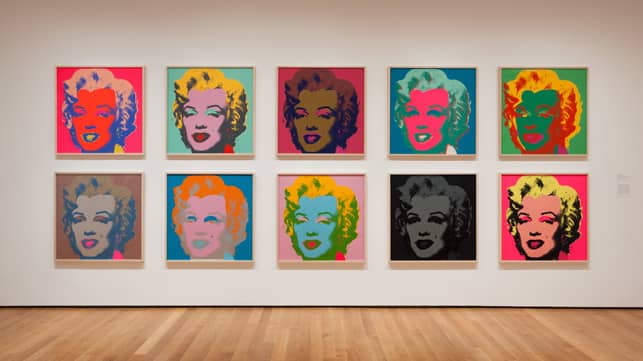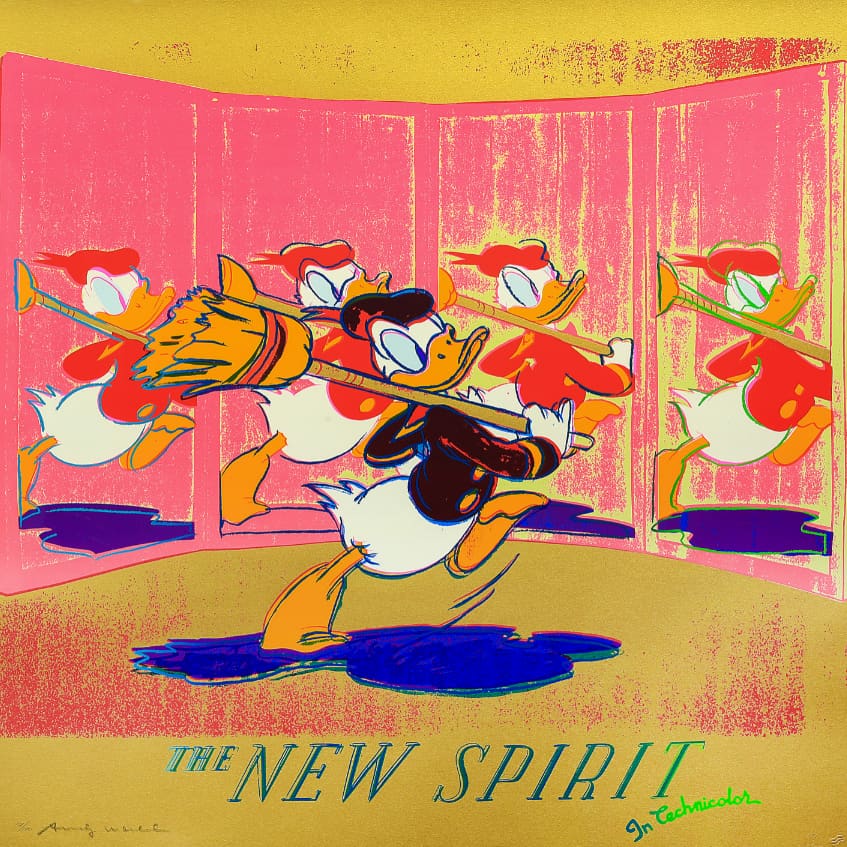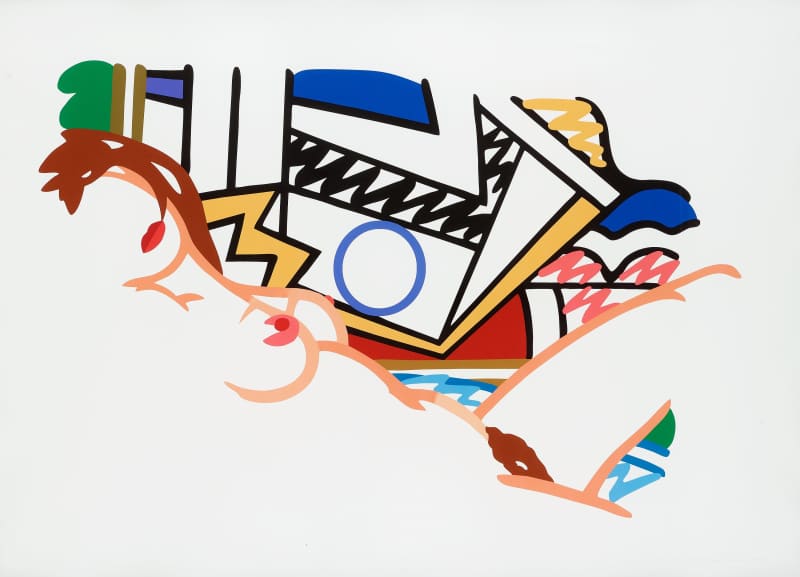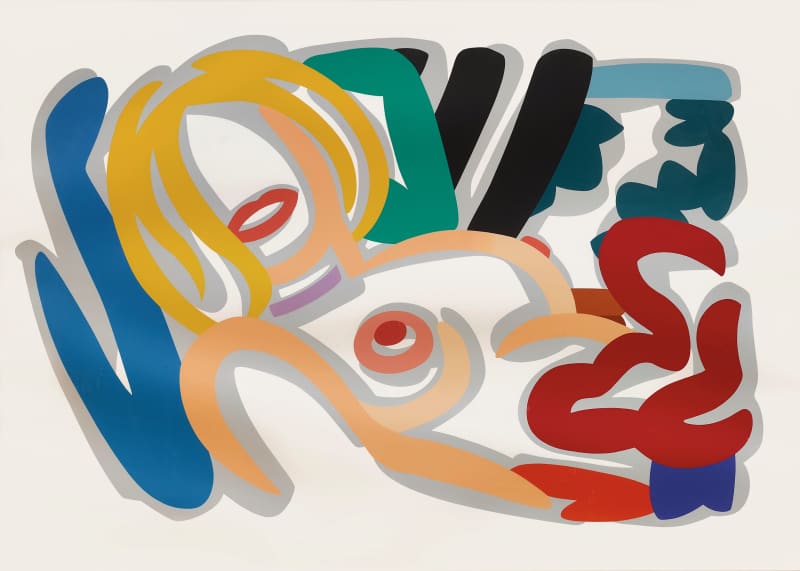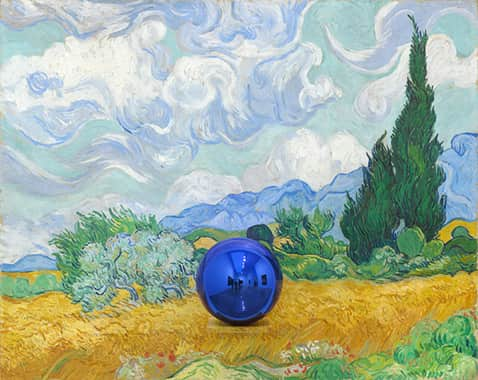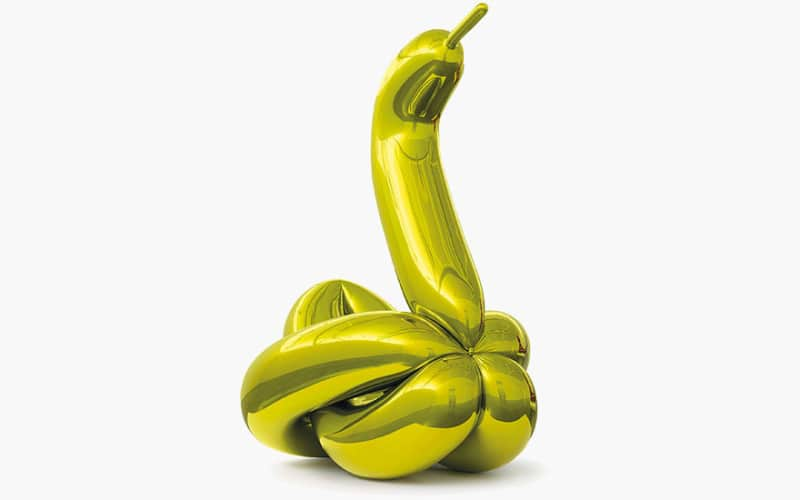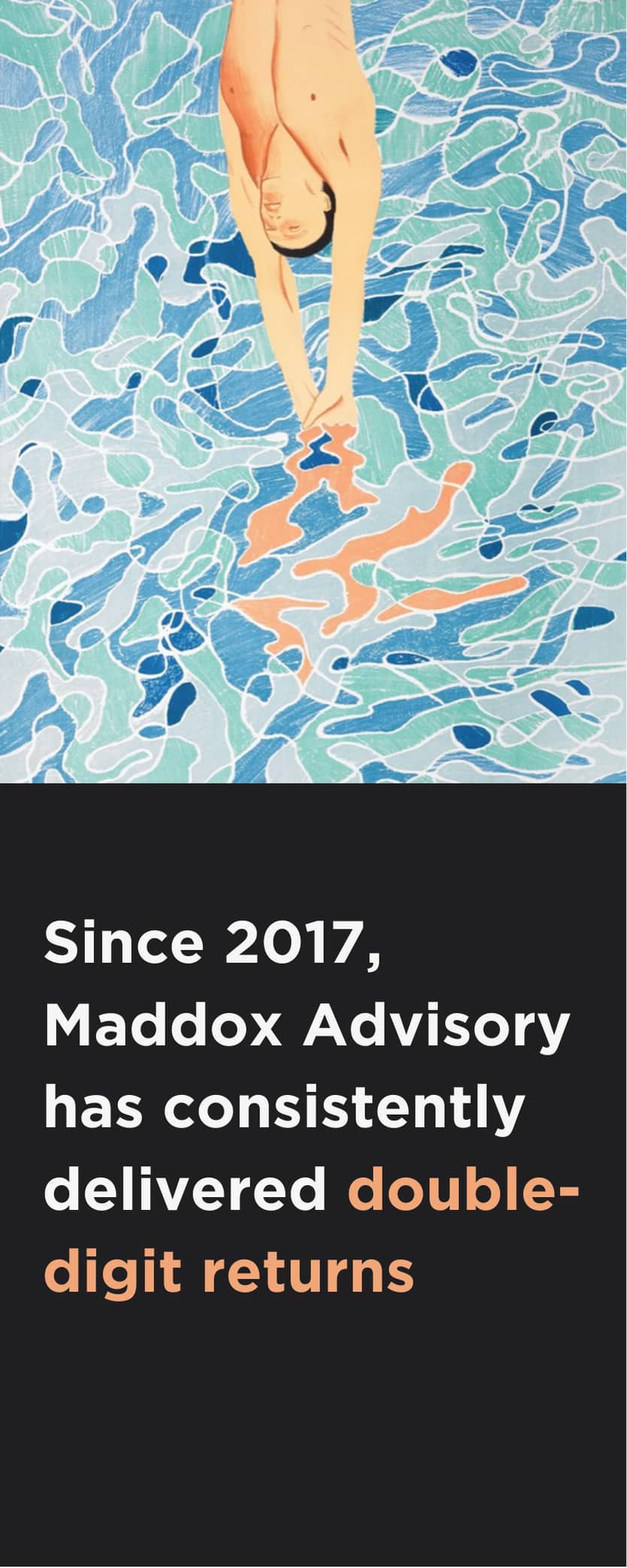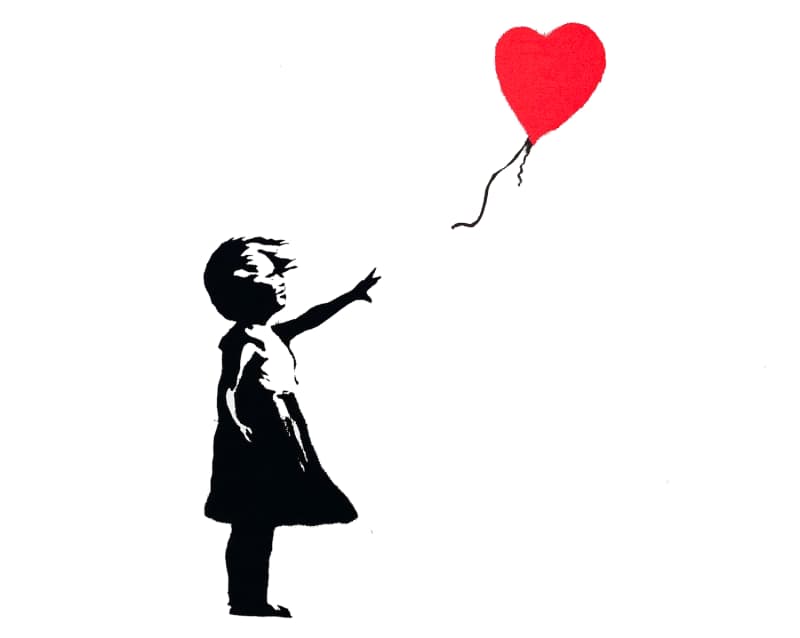(And Why You Should Too)
'Pop art is about liking things,' Andy Warhol once declared.
While the English artist Richard Hamilton had this to say: '"Pop art is: Popular (designed for a mass audience), Transient (short-term solution), Expendable (easily forgotten), Low cost, Mass produced, Young (aimed at youth), Witty, Sexy, Gimmicky, Glamorous, Big business." And when you look at it like that, is it any wonder that collectors love pop art? As too do investors, despite such seemingly unappealing words as 'expendable' and 'low cost.' But no wonder investors do; the movement has very much stood the test of time, with galleries still regularly holding retrospective Pop Art exhibitions, new emerging artists continuing to be inspired by the movement and prime examples of the genre reaching vertiginous prices at the auction houses. Not surprising really, when you consider it's based on mass consumption, celebrity and what's to be found on the front pages of papers.
Andy Warhol, screen prints of Marilyn Monroe, Museum of Modern Art, New York
Take Andy Warhol's iconic soup cans, coke bottles, Marilyn Monroes and Elvis Presleys. Or Hamilton's own swinging London series, with its compelling screen-print of a handcuffed Mick Jagger and the dealer Robert Fraser shielding their faces from the paparazzi's cameras. As the American artist and forerunner of Pop Art, Robert Rauschenberg, said, "Painting is more like the real world if it's made out of the real world." Added to which, pop art is fun, both in style and to look at, with its use of bright colours, photographs, text and cartoons. And who doesn't like that?
Andy Warhol
Warhol's name is almost synonymous with the movement - he's often referred to as 'The King of Pop Art', and was a pioneer of the genre. His own image is as recognisable and as famous as his works, which makes sense for a man whose oeuvre showed a deep understanding of branding, as well as a fascination with the idea - be it images of household products or celebrity.
Andy Warhol, The New Spirit (Donald Duck), 1985, Screenprint
All are arresting, all are compelling and the immediacy with which the subjects can be recognised only adds to the allure. Not only did he understand how branding sold, he also understood mass production - hiring a team of assistants to help him replicate his silkscreen works en masse. This caused some critics to question his authorship, but Andy didn't care. And nor do his collectors or fans - his 1963 seriagraph Silver Car Crash (Double Disaster) sold for $105 million in 2013 to an anonymous buyer, making the painting the most valuable work by Warhol to date. While The Whitney Musuem in NYC displayed 300 of his pieces in 2018, in their retrospective, Andy Warhol, From A to B And Back Again. And even more recent still, The Tate launched an Andy Warhol exhibition this March.
Roy Lichtenstein
Imitation is a key part of Lichtenstein's work, and the American borrowed pop cultural imagery from comic books and adverts. As he said, "I take a cliché and try to organize its forms to make it monumental. The difference is often not great, but it is crucial." So crucial that works like 'Whaaam' are known the world over, almost summing up what Pop Art means. Imagery however wasn't the only thing Lichtenstein borrowed: his works, highly recognisable for their formatting, were created using Ben-Day dots, the method used by media print to display gradients and textures. And, just like the cartoons he imitated, they featured bright primary colours.
Roy Lichtenstein, Sweet Dreams Baby, 1966
He didn't reserve this treatment only for popular culture; he also applied his style to everyday objects and indeed art history - take his 1969 work, Haystacks, a take on Manet's canonical series. As fellow pop artist Richard Hamilton wrote, 'Parthenon, Picasso or Polynesian maiden are reduced to the same kind of cliché by the syntax of the print: reproducing a Lichtenstein is like throwing a fish back into water.' Except that fish probably wouldn't command some $165 million dollars, as Lichtenstein's 1962 work Masterpiece did in 2018.
Keith Haring
Recognised worldwide before his early death, Keith Haring initially found fame on the streets. He started out as a graffiti artist, tagging his well known 'radiant baby' all over New York's subway stations - a testament to his belief that art was for the public, not simply the elite. So wedded was he to this idea that in 1986 he opened The Pop Shop, where he sold art that was accessible and affordable to everyone.
Though his work is bright, simple, uplifting and cute, much of it sought to raise awareness of the underrepresented and to comment upon societal upheaval - such as the AIDS epidemic, Apartheid and gay rights. Now, Haring's work fetches high prices - his 1982 piece Untitled was sold in auction in 2017 for $6.5 million. And he is as celebrated now as he was when he was many an A-lister's friend.
Jeff Koons
Typical of Pop Art, Jeff Koons' work focuses on everyday items and popular culture - Hoovers, children's toys, kitsch memorabilia, simpering ballerinas, balloons and rabbits. Often made of shimmering steel, and sneered at by some, his art is colossally successful. He uses these objects to comment on society and its obsession with consumerism. And equally, like many pop artists before him, he uses these items to connect with people and to turn the art world on its head.
Jeff Koons, Balloon Dog - Yellow, 2015, Porcelain with chromatic coating
As he told Vogue magazine in 1990, 'I want to have an impact in people's lives. I want to communicate to as many people as possible. And the way to communicate with the public right now is through TV and advertising. The art world isn't effective right now.' Effective? Maybe not to Koons, but it sure is lucrative - in 2019, Koons' Rabbit sold to art dealer, Robert Mnuchin, for $91 million dollars, a new record for a living artist.
Tom Wesselman
Once referred to as 'the most famous artist that you don't know', Tom Wesselmann was one of the earliest figures in American Pop art. From his big, bold and beautiful nudes to vibrant still lifes, and landscapes, Wesselmann was inspired by Americana and media culture, incorporating everyday objects and advertising ephemera in his billboard-scaled paintings in flat bold colours.

Tom Wesselmann, Monica Nude With Cezanne, 1992
Highly regarded for his Great American Nude series, Wesselman combines sensual depictions of the female figure with references to art history and popular culture. His works can be found in the collections of the Honolulu Museum of Art, the High Museum of Art, Atlanta, Albright-Know Art Gallery, Buffalo, and the Dallas Museum of Art. Given the popularity and current demand for Pop art, market values look promising for Wesselmann art. According to Sotheby's Mei Moses the average compound annual return for Wesselmann is 9.4%, with 77.9% of works increasing in value.

